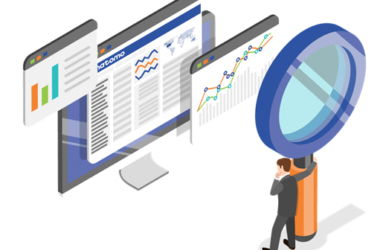One of the most common questions investors have when deciding where to put their money is whether to purchase ETFs (exchange-traded funds) or index funds. Both offer a low-cost and diversified approach to investing, but some significant differences should be considered when making this decision.
The similarities between ETFs and index funds
Regarding similarities, ETFs and index funds generally track a particular basket of stocks or bonds to expose investors to a specific market segment. If you’re looking for broad exposure to the U.S. stock market, both types of investments could provide a way to do so without buying individual stocks or bonds on your own. In addition, both types of investments generally have relatively low costs.
The differences between ETFs and index funds
However, some differences should be considered when deciding between ETFs and index funds. One of these is how they are traded. ETFs trade on the exchange throughout the day just like regular stock and can be traded at any time during market hours, meaning all transactions will occur at the prevailing market price.
Conversely, index funds do not trade on an exchange. Their transactions occur after the markets close at a set price based on the closing prices of securities within the fund’s portfolio, which means that while it is possible to buy or sell ETFs quickly if needed, there is no such flexibility with index funds since you are locked into the price set at the end of the day.
Another difference between ETF trading and index funds relates to the type of investments they offer exposure. ETFs cover various markets, from stocks and bonds to commodities and currencies, while index funds are typically focused on equities such as stocks or bonds. Suppose you’re seeking exposure to exotic asset classes like commodities or currencies. In that case, ETFs may be your best option since most index funds will not provide this type of diversification.
Finally, it’s important to consider taxes when deciding between ETFs and index funds. Since ETFs trade on exchanges throughout the day, any capital gains realised in these investments will be subject to taxes like short-term capital gains taxes, which are high. On the other hand, index funds are not traded on an exchange. Their transactions typically occur at the end of the day, meaning any capital gains will be subject to long-term capital gains taxes, usually much lower than those associated with ETFs.
How to start trading in ETFs and index funds?
Once you have decided which type of investment is best for your financial goals, it’s time to begin trading in ETFs and index funds. Before doing so, becoming familiar with the different ETF types and available index funds is essential. Similarly, many index funds specialise in various stock markets or sectors.
Before investing in ETFs or index funds, it’s also essential to research their associated fees. While both investments generally have lower costs than individual stocks or bonds, some ETFs and index funds can charge higher fees than others. Comparing different funds’ management expense ratios (MER) before committing your money is always beneficial.
Once you have identified an appropriate fund(s) for your investment needs, you will need a brokerage account to purchase them. Most online brokerages provide access to ETFs and index funds; however, some may specialise in one type. It is also essential to consider any additional fees associated with opening and maintaining a brokerage account when deciding which platform is right for you.
In addition to opening a brokerage account, investors must decide how they want their assets allocated among their chosen investments. Depending on your risk tolerance, you may want more money allocated towards low-risk equities such as bonds, while others may prefer higher-risk stocks as part of their portfolio. This decision should be based on your overall financial goals and risk profile since allocations will affect how much return you get from your investments over time.
Finally, once all the necessary steps have been taken (opening an account, selecting an appropriate fund(s), etc.), investors can begin trading in ETFs and index funds by placing buy orders through their brokerages just like any other stock or bond transaction. As with any investment strategy, diversification is critical when investing in either type of fund, so remember to spread your money among multiple asset classes for optimal returns.
The final word
While pros and cons are associated with each type of investment, it’s essential to understand the differences between ETFs and index funds to make an informed decision when investing. Both offer a low-cost and diversified approach to investing, but depending on your objectives and risk tolerance, one may be more appropriate for you than the other. Ultimately, it is up to you to choose which type of investment best suits your needs.












